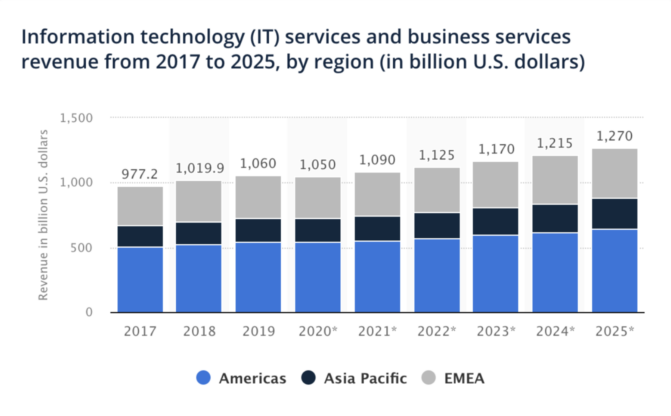

21. March 2024
Matthias Wagener
“The YouTube stream is jerking”, “Facebook is not available” – we all know situations in which it says “The Internet is not working”. This often happens at a critical point in our digital infrastructure, where the data is “stored” and made available to us: the hoster.
Without the functioning backbone of the Internet, a stable service data infrastructure, the Internet would not be possible. Data services and hosting are the most important building blocks of digital services in our everyday personal and professional lives.
And hosting is a business:


Use of cloud services in Germany from 2011 to 2022.
In 2022, 84% of participating companies stated that they were already using cloud services (private or public cloud).
Today, the Internet enables an almost infinite number of applications and services that are increasingly shaping our lives. This technology has been creating new opportunities for companies and information procurement since the 1960s, and since the 1990s at the latest.
The development of web hosting is an important part of Internet history, and the developments in web hosting show how the Internet has evolved over the years.
As in all businesses today, with great market power comes great responsibility: on the one hand for our digital lives – and because of the immense resource requirements, for our physical world too!
We already wrote about this in our blog post #3 “Data storage”: “(Data volumes) generated/replicated annually worldwide from 2010 to 2022 … and forecast to 2027 – are (calculated) in zettabytes – a unit of measurement for storage capacity, it stands for 1,0000,0000,0000,0000,0000,0000,0000 bytes or one billion terrabytes….
This sheer mass of data will continue to grow. And handling it will consume more and more resources.
Experts from the Borderstep Institute already analyzed in 2020 that the “increase in the energy requirements of data centers is mainly due to the increasing power requirements of the servers.” In comparison, the “IT components (servers, storage, network) required 10 billion kWh in 2020, around 75% more energy than in 2010 (5.8 billion kWh).” In terms of workloads, the performance of data centers has increased eightfold over the same period.

Energy requirements of data centers, increasing power requirements of servers – “IT components (servers, storage, network) will consume 10 billion kWh in 2020, around 75% more energy than in 2010 (5.8 billion kWh).
With the impact of ChatGPT in 2023, artificial intelligence and its diverse applications have now also found their way into our everyday digital lives: due to their hunger for performance and data, these central services will now require additional hosting services and further increase the Provider business and thus the hunger for resources.
We cannot see data, if we “notice” it, it is usually based on a lack of experience – if it is not available fast enough for our perception (“YouTube jerks”) or is not available at all (“Facebook down”).
An uninterrupted stream of data is also essential for more important applications (telemedicine) and many future technologies (autonomous mobility, AI). So we can’t do without it, even if we only perceive data peripherally.
What measures can help us control our own data usage in everyday life? What can be done in data centers to slow down the rising demand for energy?
Looking for some numbers, there’s not much to be found.
For example, Amazon’s AWS operates a huge global infrastructure of data centers, networking equipment and other hardware to support its cloud computing services. Of course, these data centers consume significant amounts of resources, including electricity to run servers and cooling systems and, in some cases, water for cooling.
According to estimates and reports from various sources, including environmental organizations and industry analysts, the energy consumption of data centers, including those operated by AWS, is significant and increasing with the growing demand for cloud services. According to some reports, data centers consume about 1-2% of the world’s electricity, and this percentage is projected to increase in the coming years.
However, specific statistics on the required resource consumption are limited.
Therefore, it is important to recognize the impact of data centers on the environment and the need for companies like Amazon to prioritize solutions for greater energy efficiency and sustainability in their operations; initiatives such as investing in renewable energy sources, optimizing server utilization and implementing energy efficient hardware.
These steps are critical to reducing the environmental footprint of cloud computing services like AWS.
And for Vast Forward as an SME in the digital sector, the lack of standards for sustainable hosting is incomprehensible.
With our sustainability initiative VAST GREEN, we can only focus on the measures that we can control – ideally those that have a directly measurable impact! We can choose our hosters depending on the project and requirements. Transparency has been an important criterion in our sustainability efforts since 2020. And this requirement can also be found in our Green Date Guide (which will be published in Q2 2024!).